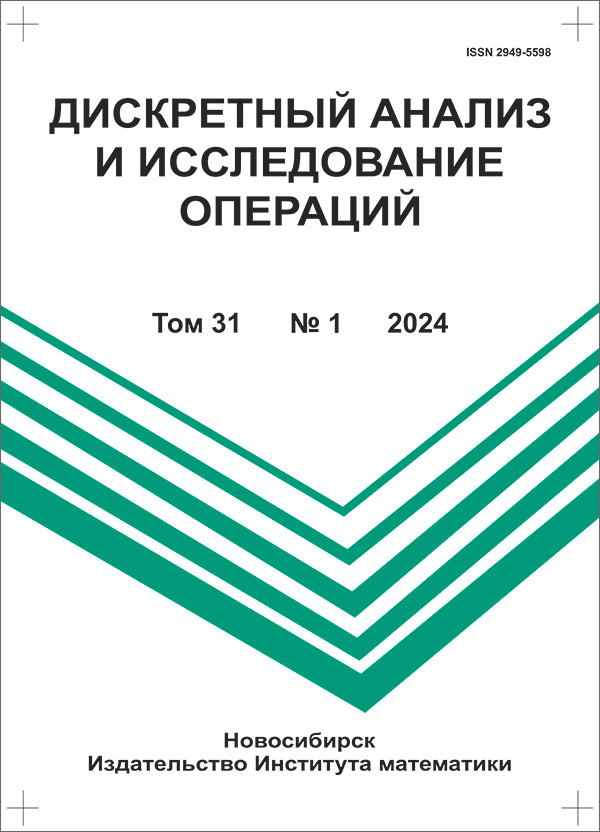|
This article is cited in 3 scientific papers (total in 3 papers)
Exact formula for exponents of mixing digraphs for register transformations
V. M. Fomichevabcd, Ya. E. Avezovab
a Financial University under the Government of Russian Federation, 49 Leningradskii Avenue, 125993 Moscow, Russia
b National Research Nuclear University MEPhI, 31 Kashirskoe Highway, 115409 Moscow, Russia
c Institute of Informatics Problems of FRC CSC RAS, 44 Bld. 2 Vavilov Street, 119333 Moscow, Russia
d Security Code LLC, 10 Bld. 1 Pervyi Nagatinskii Driveway, 115230 Moscow, Russia
Abstract:
A digraph is primitive if some positive degree of it is a complete digraph, i. e. has all possible edges. The least degree of this kind is called the exponent of the digraph. Given a primitive digraph, the elementary local exponent for some vertices $u$ and $v$ is the least positive integer $\gamma$ such that there exists a path from $u$ to $v$ of every length at least $\gamma$. For transformation on the binary $n$-dimensional vector space that is given by a set of $n$ coordinate functions, the $n$ vertex digraph corresponds such that a pair $(u,v)$ is an edge if the $v$th coordinate component of transformation essentially depends on $u$th variable. Such a digraph we call a mixing digraph of transformation.
We study the mixing digraphs of widely used in cryptography $n$-bit shift registers with nonlinear Boolean feedback function (NFSR), $n>1$. We find the exact formulas for the exponent and elementary local exponents for $n$-vertex primitive mixing digraph associated to NFSR. For pseudo-random sequences generators based on the NFSRs, our results can be applied to evaluate the length of blank run. Bibliogr. 20.
Keywords:
mixing digraph, primitive digraph, locally primitive digraph, feedback shift register, exponent of a digraph.
Received: 06.09.2019
Revised: 27.09.2019
Accepted: 19.02.2020
Citation:
V. M. Fomichev, Ya. E. Avezova, “Exact formula for exponents of mixing digraphs for register transformations”, Diskretn. Anal. Issled. Oper., 27:2 (2020), 117–135; J. Appl. Industr. Math., 14:2 (2020), 308–319
Linking options:
https://www.mathnet.ru/eng/da953 https://www.mathnet.ru/eng/da/v27/i2/p117
|

| Statistics & downloads: |
| Abstract page: | 298 | | Full-text PDF : | 63 | | References: | 27 | | First page: | 2 |
|




 Contact us:
Contact us: Terms of Use
Terms of Use
 Registration to the website
Registration to the website Logotypes
Logotypes







 Citation in format
Citation in format 
